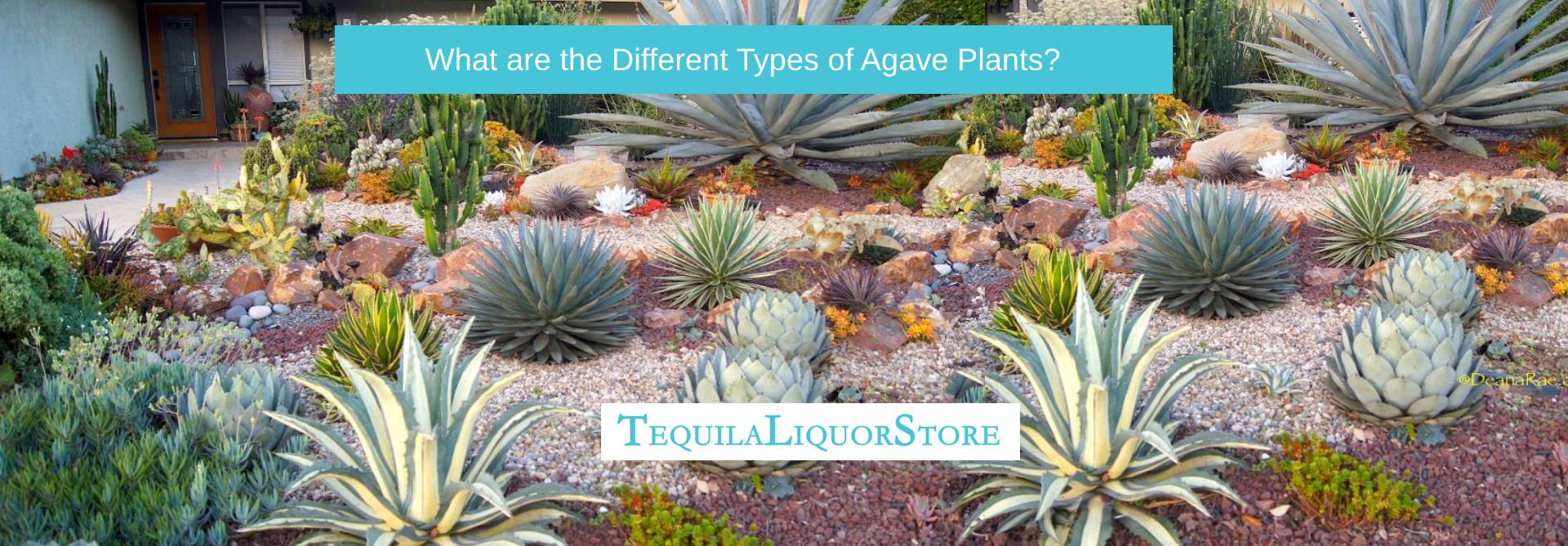Do you love tequila? Do you ever find yourself wondering just what it’s made out of? Or do you already know it comes from agave, but want to know more about any variations that might be out there? If you sometimes find yourself wishing you could learn a little more about the agave used in tequila, you’re in the right place.
Tequila is a very well-known and beloved liquor made from the agave plant. However, to leave it at this simplification is a disservice to the many varieties of tequila and similar (but still different) liquors out there, too. Check out the information below to find out more about the different types of agave used in the production of liquors. You may just discover something you’ve never heard of before, and you might uncover your new favorite drink all thanks to the agave plant.
Types of Agave
Agave tequilana Weber (Blue Agave)
This type of agave is the most well-known and commonly used in the liquor world. Blue agave is used to make all types of tequila, and a liquor absolutely cannot be called tequila if it isn’t made from blue agave. This agave grows naturally in a few parts of Mexico, namely in Jalisco. It’s a medium-sized plant that flowers once in its life and takes anywhere from seven to fourteen years to mature before it can be harvested for tequila production. The liquor made from this plant can be aged to create a variety of different flavor profiles.
Agave angustifolia
This is the most prominent type of agave used in the production of Mezcal. However, Mezcal can be made from a variety of different types of agave. Agave Angustifolia accounts for around 90% of all Mezcal and is very closely related to the blue agave used in the production of tequila. Because of their similarity, the two have flavors that are reminiscent of each other. This type of agave matures for distillation purposes in about nine years.
Agave maximiliana
Sometimes used in Mezcal, Agave Maximiliana is most often used in raicilla, which is another drink similar to Mezcal and tequila. This is a very large type of agave plant that is quite a bit different from the others on the list. One popular rumor states that the Maximiliana is so different from other agaves that it shouldn’t really be called agave at all—although there isn’t much scientific reasoning to back up that rumor. It is sometimes believed that any liquor made of this agave will extend the life of the person drinking it.
Agave rhodacantha
Those who enjoy a more savory liquor may like the type of Mezcal that comes from Agave rhodacantha. This agave tastes subtly savory and sweet at the same time, casually balancing both flavors in the perfect combination. Some Mezcals that come from this agave are also considerably spicy.
Agave pacifica
This type of agave is used specifically in the production of Bacanora. Liquor can only be labeled as a Bacanora if it’s made in Sonora and if it comes from Agave pacifica. This agave tastes smoky and warm overall in comparison to some others, although it may resemble some of the less common Mezcals on the market, too.
Agave petatorum
This is a small, wild type of agave that is sometimes used in Mezcal production. It is colloquially referred to as tobala and grows naturally at high elevations. Because of its penchant for cold, high climates and its tendency to grow in the shade, it doesn’t get as large as some of its cousins, and it can be difficult to harvest from the wild as well. This type of agave has citrus and almost pineapple flavor with a lot of sweetness behind it, so the Mezcal it creates is much different from the traditional.
Agave deserti
This type of agave grows in the United States, specifically in California and Arizona. It’s much smaller than many other types of agave used in liquor creation. Some people call it a “desert agave” colloquially, and many grow it in their yards, since it is easy to grow in its natural climate. This plant is used to make pulque, which is a relative of tequila but which tastes quite a bit different. Pulque is sour and yeasty in taste and creamy in texture, and the drink tends to be an acquired taste.
Sotol
Sotol is both the name of a drink and the name of a plant. The plant is not a type of agave, but it is a very close relative called Dasylirion wheeleri, or “desert spoon” colloquially. Sotol plants flower more than once, where agave plants only flower once, so they are a little bit easier to harvest than the agave. Once harvested, sotol is distilled into liquor in the same process that agave is, so the creation of sotol (the beverage) is not unlike that of tequila. Sotol is not very widely available commercially but is still a popular choice in parts of Mexico and in Texas.
Conclusion
Did you realize there were a few different variations on the agave plant, or have you learned something new here today? If you’ve never heard of some of these, or if you’ve never heard of the liquors they can be used for, do yourself a favor and sample some or all of these alcoholic beverages next time you have a chance.
There are many different agave-based liquors on the market, even if they can’t all be classified as tequila. Some of them have very similar flavors to tequila, while others showcase different features of different types of agave from other parts of the world. Whether you’re a big fan of tequila already or you just like to try a few different, unique liquors when the opportunity arises, you can’t go wrong sampling some of these drinks.
And when you do, don’t forget to show off a little of your agave knowledge at the same time!




